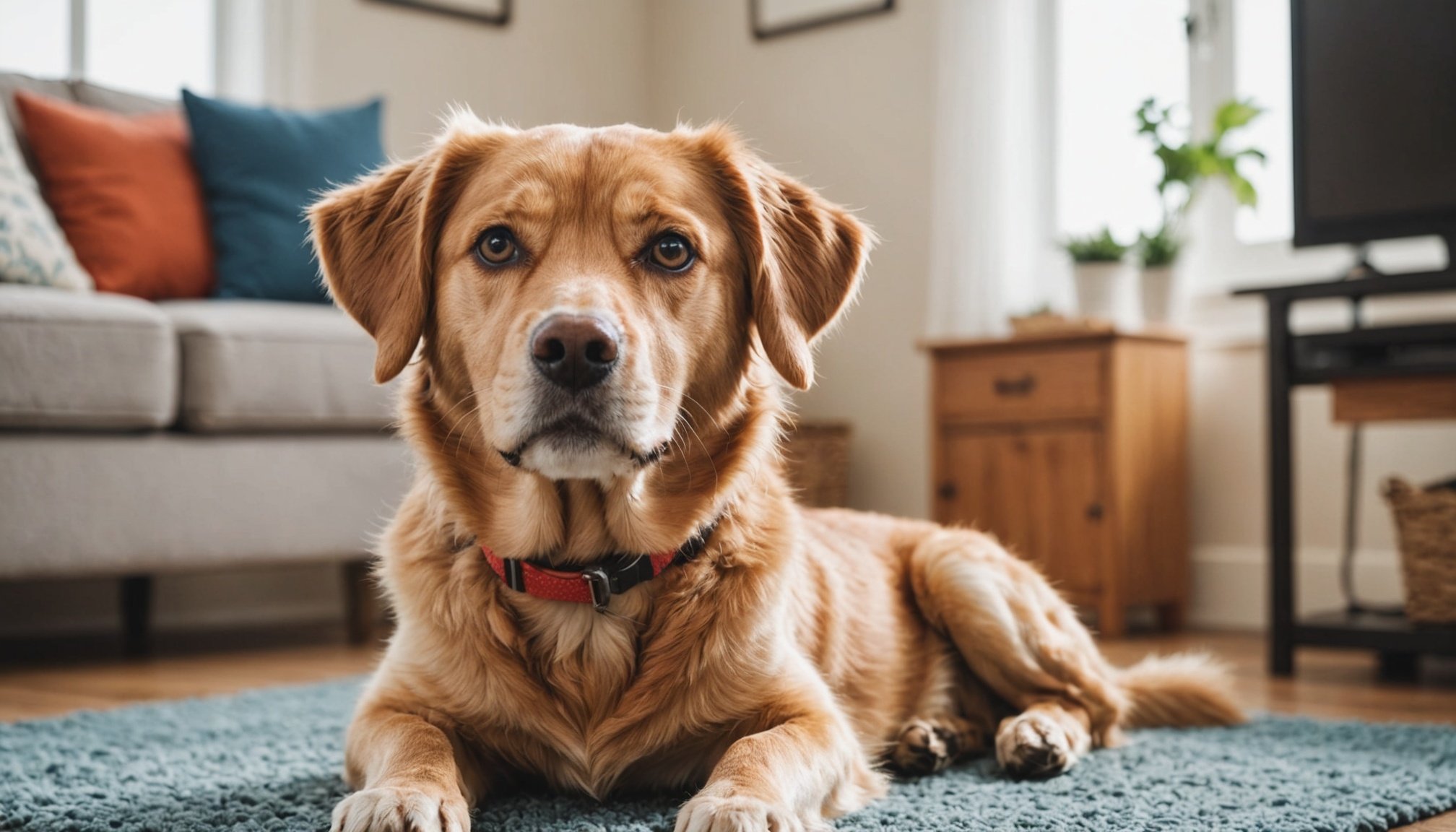Understanding Dog Anxiety
Dog anxiety is a common yet distressing condition for both pets and their owners. Canine behavior can be significantly impacted by anxiety, leading to a compromised well-being. Identifying the causes of anxiety in dogs is key to addressing these issues effectively.
Common Triggers
Dogs can experience anxiety due to a variety of reasons, but loud household noises often top the list. These may include thunderstorms, fireworks, or even loud appliances. Such noises can trigger a fight-or-flight response in dogs, which stems from their acute hearing and instinctive reactions.
Have you seen this : Paws-on-the-Go: Top Tips to Ensure Your Dog’s Comfort and Calm on Car Rides
Behavioral Signs
Recognizing signs of anxiety in your pet is crucial. Symptoms may include trembling, excessive barking, hiding, or destructive behavior. In some cases, dogs might also exhibit changes in appetite or pacing.
Impact on Well-being
The effects of anxiety extend beyond immediate reactions. Over time, chronic fear can lead to health issues such as increased heart rate, weakened immune system, or digestive problems. Understanding these underlying causes of anxiety allows for targeted interventions that can significantly improve a dog’s quality of life. Addressing dog anxiety is not just about managing symptoms but enhancing overall health and happiness.
In parallel : Mastering Agility: The Definitive Guide to Training Your Border Collie for Unmatched Success
Practical Tips for Easing Anxiety
Addressing anxiety relief techniques can significantly improve a dog’s quality of life, reducing stress and promoting well-being. One effective method involves training exercises specifically designed to desensitize dogs to loud noises. Gradual exposure to sound, coupled with positive reinforcement, can help dogs build tolerance, easing their instinctive reactions.
Calming products provide additional support. Devices such as anxiety wraps can give a comforting, hug-like effect, which can be especially soothing during stressful events. Similarly, pheromone diffusers release synthetic versions of dog pheromones, imparting a sense of calm within the environment.
Considering environmental modifications is also crucial for fostering a serene living space. Creating quiet zones with familiar bedding or toys can provide respite for anxious dogs, allowing them to retreat from overwhelming stimuli.
Ensuring a combined approach using diverse techniques can be more effective than relying on a single method. By harmoniously integrating training exercises, calming products, and environmental changes, owners can support their dogs in coping with stress and anxiety, enriching their day-to-day experiences while fostering a stronger bond between pet and owner.
Interactive Strategies to Engage Your Dog
Interactive activities are vital for providing mental stimulation and shifting focus away from anxiety-inducing stimuli. Incorporating games such as fetch or hide-and-seek can keep your dog engaged, offering a constructive outlet for their energy. These activities serve as not just physical exercise but also a means to calm the mind.
Positive reinforcement is paramount in helping dogs associate loud noises with pleasant experiences. By rewarding desired behaviours with treats or praise, you enable your canine to focus on the enjoyable outcomes of hearing these sounds. Consistent reinforcement builds a stronger, positive connection, reducing anxiety over time.
Several interactive toys, like puzzle feeders, can additionally alleviate stress during triggering events. These toys engage a dog’s natural curiosity and need for mental exercise, keeping them occupied and less aware of potential environmental threats. They even grant dogs the opportunity to work for their rewards, enriching their playtime.
Through a combination of interactive pursuits and positive reinforcement, dogs experience lower stress levels and improved behaviour. Encouragement of mental agility not only aids in combating anxiety but also grants the dual benefits of behavioural health and enhanced owner-dog relationships.
When to Seek Professional Help
Understanding when to turn to professional dog training can be crucial for managing dog anxiety effectively. If your pet shows persistent signs despite implementing various strategies, it may be time for an anxiety consultation. Dogs exhibiting severe behavioral changes, or those whose anxiety leads to self-injury, benefit greatly from expert intervention.
There are various professionals who specialise in dog anxiety. Veterinary advice is essential to rule out medical causes that might exacerbate anxiety. Veterinarians can also prescribe anti-anxiety medication if other approaches are insufficient. A certified dog trainer can offer tailored training aimed at easing specific behaviours, while dog behaviourists provide insights into the psychological reasons behind anxiety.
Collaboration among these experts ensures a holistic approach to your dog’s well-being. Not only do they address immediate symptoms, but they also focus on long-term psychological health.
Indicators for seeking professional help include:
- Prolonged anxiety that doesn’t improve with basic interventions
- Physical harm due to anxiety-driven behaviors
- Major disruptions to a dog’s daily routine
By engaging with professionals, pet owners can ensure they take comprehensive steps toward improving their dogs’ quality of life.











